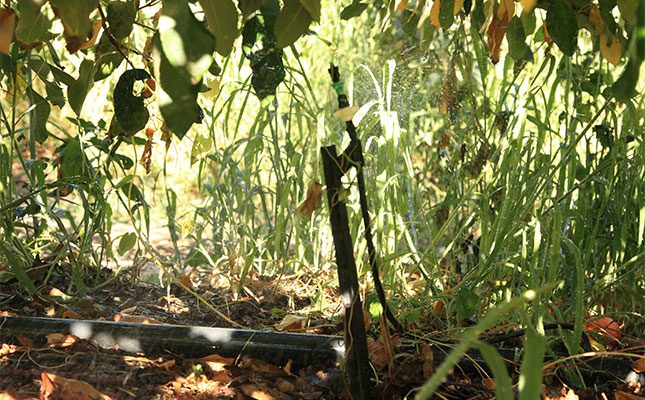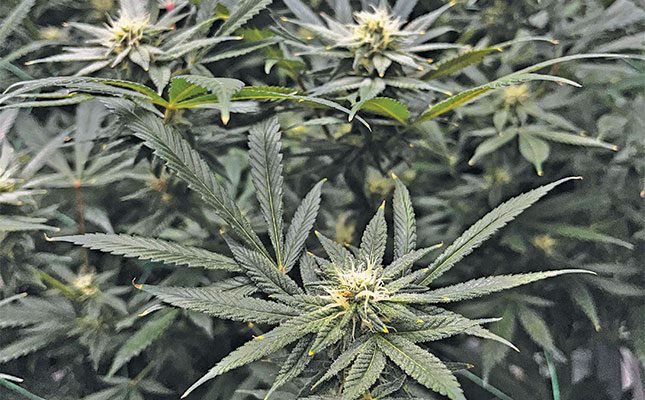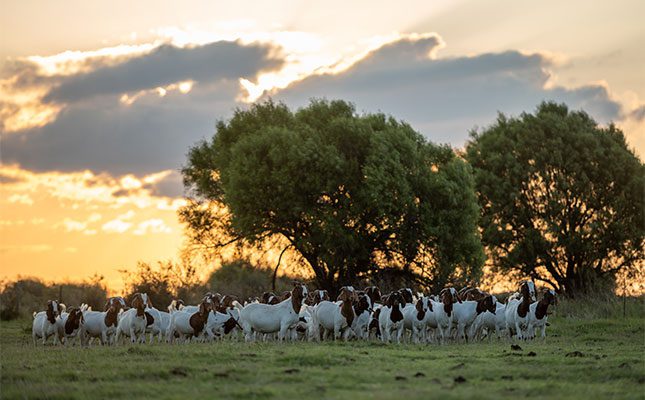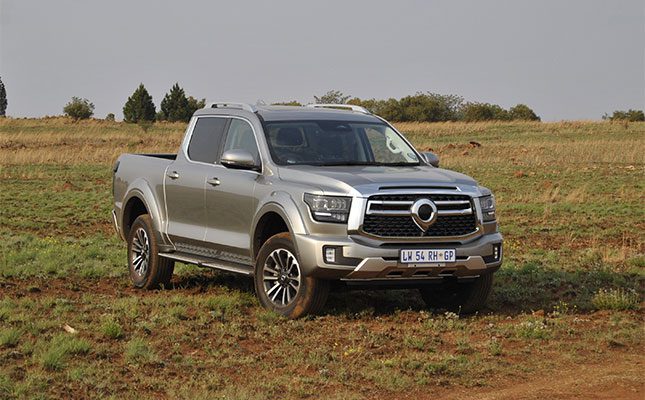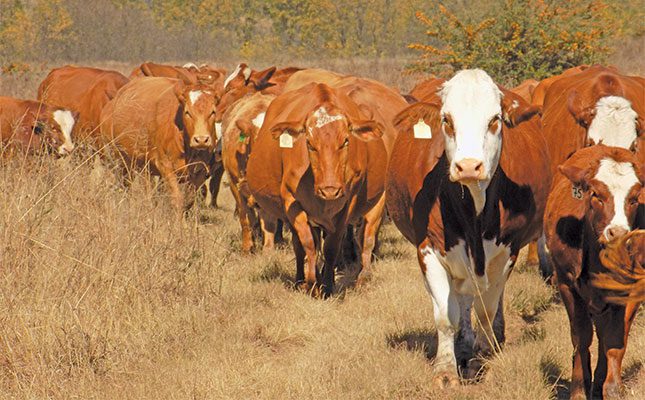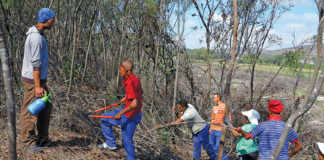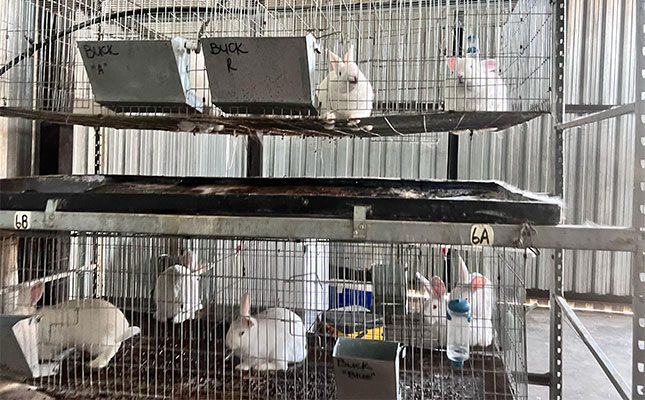
Photo: Supplied
While rabbit farming remains a niche segment of South Africa’s livestock industry, it is gaining momentum thanks to growing interest from consumers and new markets opening up for its meat and by-products.
According to farmer Daisy Moleko, founder of Rabbit Farmer and the Rabbitry Academy, the growth is fuelled by structured training, innovative market models, and a growing awareness of the value that rabbit farming can add to both emerging and commercial agriculture operations.
Increasing enthusiasm
“Rabbit farming in South Africa is definitely growing. After over 24 years of research and development, we’re seeing more farmers showing an interest and taking the first step into the industry.
“The key has been creating a one-stop solution – training, supply chains, and market access – that makes it easier for farmers to succeed,” says Moleko.
Although the industry is still developing, there is a clear move towards formalising rabbit farming as a viable and profitable venture. Moleko says this shift is being driven by growing awareness among chefs, consumers, and farmers,

as well as increased visibility through meat tastings and outreach events.
But, despite the momentum, rabbit farmers continue to face significant challenges.
“The biggest issue is biosecurity. Many farmers don’t have the proper infrastructure or knowledge when they start out, often using free-range methods that aren’t suitable for commercial operations. Without training, it’s easy to make costly mistakes that affect animal health and meat quality,” explains Moleko.
She advises farmers to seek structured training and mentorship before starting out.
“This is not a cut-and-paste venture. Rabbit farming requires the same level of commitment and expertise as any other form of livestock farming,” she says.
Best breeds for commercial production
For farmers exploring rabbit farming, breed selection is crucial. Moleko recommends the New Zealand White for commercial purposes.
“It’s a hardy breed, produces high-quality white meat, and the females – called does – can produce between six and 16 kits per litter. It’s also easier to manage their genetics and maintain uniformity in production,” she explains.
She adds that other breeds like the Californian White and Italian White are available, but may produce meat with a darker colour and lower yield, which may not meet the market preference in South Africa.
Housing and infrastructure tips
Proper housing is key to a successful rabbit farming operation. Moleko advises farmers to invest in steel cages rather than wooden ones.
“Steel is durable, easier to clean, and prevents bacterial build-up from urine. Cross-ventilation is also critical, as rabbits need fresh air and controlled temperatures to remain healthy,” she says.
Farmers should design housing that accommodates the rabbits’ growth, allows for easy maintenance, and prevents overcrowding, a key factor in disease prevention.
When it comes to space requirements for rabbit farming, precision is key. According to Moleko, there is a specific requirement, and each rabbit must have its own cage.
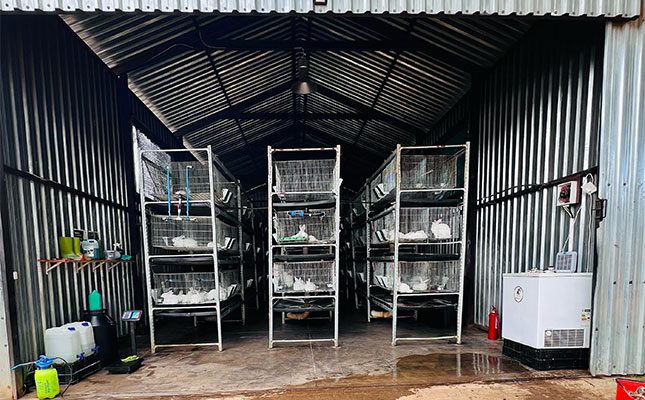
“We use 450mm by 900mm cages for does, because you need to put in the nesting box and leave enough space for the mother and babies when she gives birth.”
She explains that cages for bucks are slightly smaller. “With bucks, go with 400mm by 600mm. If the space is too large, such as 600mm by 900mm, mating becomes a challenge. The smaller space helps ensure they mate quickly.”
For weaning purposes, Moleko says that shared spaces are acceptable.
“You can’t put more than 10 rabbits in a weaning cage; five to 10 is ideal. This helps prepares them for slaughter,” she explains.
Feeding practices for healthy rabbits
When it comes to feeding rabbits, Moleko emphasises the importance of consistency.
“We feed them commercial pellets. A lot of people say you can feed them vegetables, too, but that doesn’t work for commercial rabbits.
“We also have our own formula that we’re waiting to get certified and accredited. But for now, we use what’s available on the market, and the pellets contain all the nutrients that rabbits need.”
Proper feeding schedules are critical, too. “Farmers make the mistake of feeding rabbits whenever they think the animals are hungry. Rabbits eat and store food to eat later in the day. So, having a structured feeding routine helps improve meat quality and growth rate,” she says.
From birth to market weight
Reaching the ideal market weight of around 2kg is another crucial benchmark for profitability.
“Rabbits born on the same day don’t [necessarily] grow at the same rate. I advise farmers to give them [up to] three months to reach 2kg. If you slaughter them at two months, you usually get 1,8kg or 1,9kg, not quite 2kg,” she says.
She also warns against letting rabbits grow too large. “You don’t want them to reach 2,5kg or 3kg, because they’ll have too much fat. Two to three months is the ideal [age for slaughter], depending on feeding routines and genetics.”
According to Moleko, growth rates are closely tied to feeding discipline. “If you stick to a routine, rabbits get used to it and grow faster. Some will reach market weight at two or two-and-a-half months,” she says.
Understanding disease risks
Disease incidence in rabbits is relatively low when biosecurity is enforced.
Moleko says the only major disease outbreak has been rabbit haemorrhagic disease, but it can be controlled through strict biosecurity.
She adds that cleanliness and control of farm access is essential: “Keep your rabbitry clean, and don’t allow everyone into your farm.”
Still, minor conditions do occur. “Some rabbits may develop liver problems, digestive issues like constipation, or dental problems like overgrown teeth. But this usually affects only about one in every 200 rabbits.
“The most common issue is ear mites. You’ll see dark marks or dry skin in the ears. It can cause discomfort or hearing problems, so it’s important to treat it immediately,” she adds.
Start-up costs for rabbit farming
Start-up costs vary, depending on the size of the farming operation. “We found that
farmers typically start at three different levels: R150 000, R350 000, or R550 000,” says Moleko.
Farmers are advised to give themselves time to build up their breeding stock.
“It takes about a year to build your parent stock. For a good return, you need at least 340 breeding does,” she says, adding that this number can produce between 1 600 and 2 000 rabbits per year.
“You won’t get a return on your investment overnight. We tell farmers to give themselves three years, but if they follow the plan, returns can come sooner.
“You usually break even in the second year and start making money in the third. We teach farmers to manage their production well, because the parent stock drives good output,” she explains.
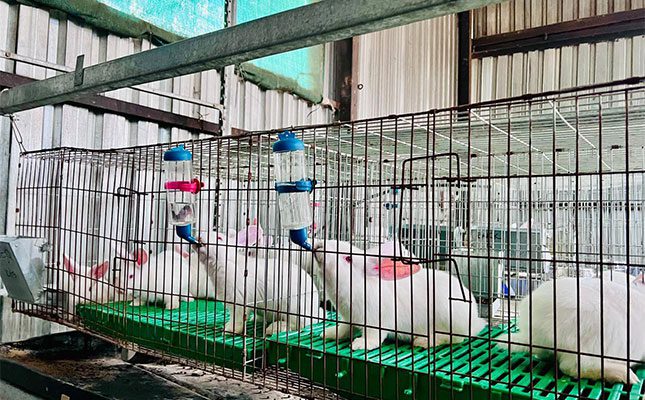
According to Moleko, while the potential returns are promising, rabbit farming requires significant capital.
“It’s a very expensive process, which means you also need to be very serious about it. That’s something important I’ve learnt – the financial aspect of it,” she adds.
On the question of ideal conditions, Moleko notes that rabbits are highly adaptable.
“Rabbits can withstand most weather, but it mustn’t be extreme, and their housing must allow for cross-ventilation,” she advises.
“You must also consider which animals share the space [with your rabbits] in order to manage biosecurity. For example, chickens can introduce disease.”
Market access
Access to markets remains one of the biggest hurdles for small-scale producers. “Locally, there’s a huge market. Every day we get orders for two, three, or even 10 rabbits. Customers are looking for the meat, but they don’t know where to get it,” says Moleko.
She adds that exporting rabbit meat, however, is a more complex matter.
“We’ve tried to send meat to other countries, but the challenge is sending in bulk. Still, we’re using regional networks like the Southern African Development Community to distribute within Africa. We work as a group of farmers and supply the market together,” she explains.
According to her, compliance with regulations is also essential for selling rabbit meat.
“Your abattoir must comply with the Meat Safety Act [No. 40 of 2000]. We use an abattoir that’s accredited and regularly checked by the Department of Agriculture. That way, if something goes wrong, we can trace it,” she points out.
Demand for meat and by-products
There is a steadily increasing demand for rabbit meat in South Africa, particularly among health-conscious consumers and the culinary sector.
“Consumers are amazed by the flavour and quality of the meat, and having a buy-back model ensures there is a market for farmers’ products,” says Moleko.
Beyond meat, rabbit leather, used to make shoes and bags, is emerging as a valuable by-product. There’s also growing interest in rabbit urine and manure as organic inputs for crop production.
“Crop farmers are looking for chemical-free options, and rabbit by-products are rich in nutrients. Rabbit farmers should have systems in place to collect and sell the urine and manure,” she says.
Moleko concludes that as rabbit farmers continue to build their networks, the call for support, innovation, and recognition in the industry grows louder.
For more information email Daisy Moleko at [email protected].





